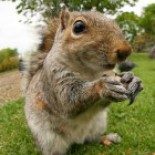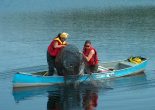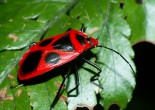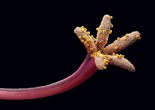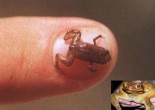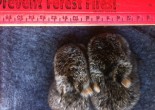Past as prelude: Predicting how fish will cope with climate change
By Rebecca Batstone, EEB Pop psychologist ‘Dr. Phil’ McGraw always says that “the best predictor of future behaviour is … past behaviour”. A maxim that can also be applied to fish. … Continue reading
A little bit of sex goes a long way
By Matthew Hartfield, EEB. Matty Hartfield gives us a digestible discussion of his latest paper, coauthored with Stephen Wright and Aneil Agrawal, which is available on biorxiv. Most evolutionary biologists are obsessed with … Continue reading
Motherhood, a heavy load to bear
By Kirstin Brink, EEB. Mothers make huge sacrifices for their kids. But some mothers, such as those among black-horned tree crickets, really go out on a limb for their young. … Continue reading
Searching for monkeyflowers in California
Gallery: Click on the first picture and Kelly Carscadden (EEB) will walk you through her fieldwork.
Why are some worms more diverse than others?
By Gavin Douglas, EEB Some of us are picky about where we live, while others can put down roots anywhere. Worms, aren’t much different. Shuning Li, Richard Jovelin and Asher Cutter … Continue reading
Are aggressive sperm a barrier to cross species sex?
By Arvid Ågren, EEB Males often compete fiercely for access to females. A new study shows that the consequences of this competition may extend beyond showy tails and big antlers, and … Continue reading
A new method to quantify species loss and gain
By Emily Drystek, EEB Every year rubber trees drop their leaves. When the leaves grow back they are deserted islands waiting for a community of animals to set up home. … Continue reading
Why do plants have biased sex ratios?
By Nathaniel Sharp, EEB One of the most celebrated arguments in evolutionary biology is the idea that populations should consist of an even number of males and females. The reason … Continue reading
The bullies and the bees
By Brie Edwards, EEB Ants and bees are fighting a turf war. Using elegantly constructed artificial flowers baited with plenty of sugary water, recent graduate Adam Cembrowski teamed up with … Continue reading
Females range in size more than males
By Aaron Hall, EEB Why do closely related species vary so much in size? This is the question on the lips of evolutionary biologists Stephen De Lisle and Locke Rowe from … Continue reading
Getting a grip on love
By Janice Ting, EEB When the flashy colours and fancy dancing don’t impress her, male guppies—tropical fish common in fish tanks—use claws on their penises to hang on to resistant … Continue reading
It’s a small world if you’re a miniature fish
By Stephanie Lefebvre, EEB From elephants to ants, walruses to weevils, animals vary hugely in size. But how an animal’s size influences its life isn’t well understood. For example, how … Continue reading
Toronto’s climate was not so hot 120,000 years ago
By Shaheen Bagha, EEB New analysis of ancient leaves has revealed that Canada’s ancient climate was cooler than previous thought. By examining fossilised leaves, wood and pollen, the Toronto-based team now think … Continue reading
Snowshoe hare catching in the Yukon
Gallery: Click on the first picture and Sophia will walk you through her fieldwork. Sophia Lavergne is a graduate student in the department of Ecology and Evolutionary Biology. Along with … Continue reading
Worms, the most diverse animals
By Lucia Kwan, EEB Forget the vast array of feathers and fur in the natural world, the most diverse animal is a worm—Caenorhabditis brenneri. Collecting worms from rotting fruits and … Continue reading
Do flies make better pollinators than bees?
By Kelly Carscadden, EEB If someone says ‘pollinator’, what is the first image to come to mind? A bee? Many flowering plants use bees to move pollen from one flower to … Continue reading
